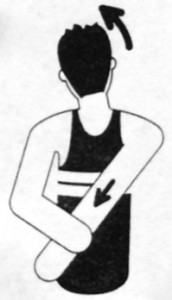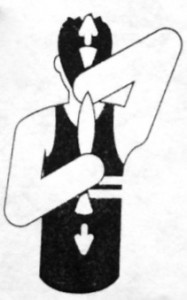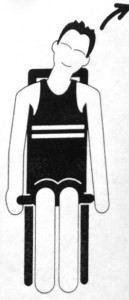01 Aug Stretching Basics
Stretching Basics
Stretching has been proven to help maintain flexibility as well as release pain and tension.
Specific and Sustained
A stretch should be specific to the muscle that needs it. It is like scrubbing a pot clean; if you don’t scrub where the food material is stuck, then you are wasting your time. Your massage therapist can help you identify which muscle (or muscles) needs stretching and the position that is required to stretch it.
A stretch needs to be sustained long enough to create change. An effective stretch changes the tonus or resting tension in the muscle. It should also create a lengthening of the connective tissue within and around the muscle. This usually takes 30 seconds of stretching, but if the muscle is stubborn it may take a minute or two of sustained stretch to release. Your massage therapist can help you decide how long to hold the stretch for your body.
Breathe and Relax!
Don’t just relax the muscle you are stretching! Include every other muscle in your body that is not required to hold the posture of the stretch. Any extra tension in your body prevents relaxation in the muscle you are trying to stretch.
When you are stretching, deepen and slow your breathing, with a bit more emphasis on the exhalation (letting the air out) than the inhalation (breathing the air in).
Stretching should feel . . . Good!
A good stretch creates a mild feeling of tension or pulling in the muscle. If you are relaxed and sustain the stretch long enough, there is usually a release. A release is usually accompanied by a sweet, easeful feeling in your mind and body. If you are new to stretching, you may not feel all these nice feelings, but there should be the sensation of the muscle gradually pulling less as you sustain the stretch. When this happens, take your body a little further into the stretch and continue it for 2 more releases.
When and How Often?
The best times to stretch are usually at the beginning and end of the day. This makes the stretching and accompanying relaxation fit around your day like bookends. Early morning stretching helps you start the day with a feeling of looseness and ease that reaches into your day. Stretching at the end of the day helps release any tension that has accumulated during the day. This helps deepen the relaxation that should occur with sleep. And it makes it less likely that you will be woken up in the night by tense thoughts or muscles!
If you have slightly strained a generally healthy muscle, then you might need to only stretch it a couple times a day for a day or two.
However, if the muscle has been tight and causing you problems for months, you usually need to stretch it a couple times a day for a couple weeks. If the muscle has been tight for years, then it may take 2 or 3 months of consistent stretching to lengthen it.
When Muscles Don’t Relax.
When stretching doesn’t relax a muscle, you might be making a mistake in form or you may be tensing and trying too hard! Your massage therapist can help you problem-solve the situation.
When muscles do relax well with stretching, but the tension keeps returning, you are probably doing something during the day that is putting the tension back in. This can range from sitting at a chair with armrests that are too high, to not giving yourself a reasonable pace to your day.
Again, your massage therapist can help you work your way through these problems!


Sorry, the comment form is closed at this time.